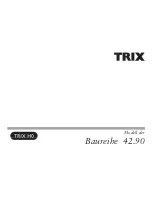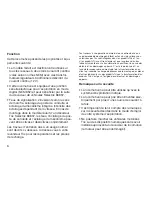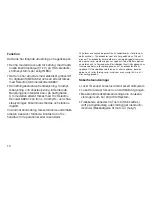
Information about the Prototype
Information zum Vorbild
2
Die Idee hinter der Konstruktion der italienischen
Konstrukteure Franco und Crosti ist bestechend.
Warum soll man die in den Rauchgasen der Loko-
motive steckende thermische Energie nicht zum
Heizen des Speisewassers nutzen? Hierzu wird die
Lokomotive mit einem sogenannten Speisevorwär-
mer ausgerüstet, in dem dieser Wärmeaustausch
stattfindet.
Zur praktischen Überprüfung dieser Idee wurden
von der Deutschen Bundesbahn in den fünfziger
Jahren zwei neugebaute Modelle der Baureihe 52
zur Baureihe 42.90 umgebaut.
Eine erhebliche Verringerung des Brennstoffbe-
darfs konnte auch in der Praxis nachgewiesen
werden. Durch die hohe Korrosionsanfälligkeit des
Speisevorwärmers wurde dieser Vorteil jedoch in
den Gesamt-Betriebskosten wieder zum Großteil
zunichte gemacht. Die beiden Lok-Modelle waren
bis 1959 bzw. 1960 von Bingerbrück und Ober-
lahnstein aus im Einsatz.
The idea behind the design from the Italian
engineer’s Franco and Crosti is fascinating. Why
shouldn’t the thermal energy contained in the ex-
haust gases from the locomotive be used to heat
the water fed into the boiler?
The locomotive is equipped for this purpose with
a so-called feedwater heater in which the heat
exchange takes place. Two newly built class 52
models were converted by the German Federal
Railroad to the class 42.90 as a practical test of
this idea.
In practice there was a considerable reduction
in the consumption of fuel. The high incidence
of corrosion in the feedwater heater, however,
negated this advantage in the total operating
costs. The two locomotives were kept in service
until 1959 or 1960 in the areas of Bingerbrück and
Oberlahnstein.
Summary of Contents for 42.90
Page 1: ...Modell der Baureihe 42 90...
Page 13: ...13...



































